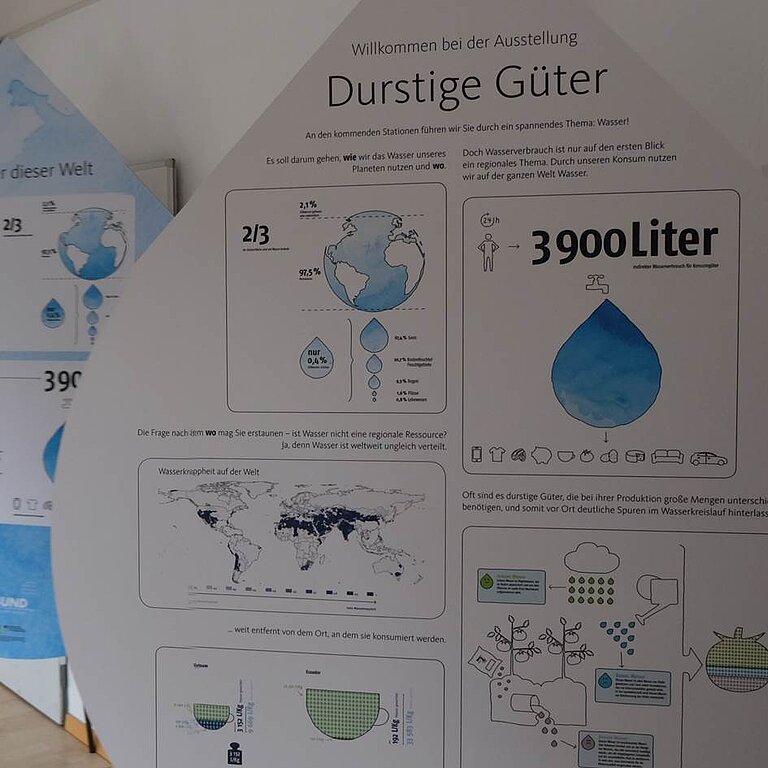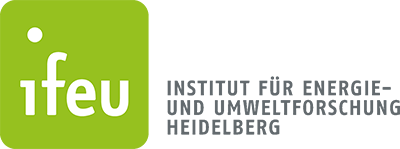Travelling Exhibition 'Thirsty Goods'

140 L of water for one cup of coffee – is that a problem?
An answer to the question above, among many others around water as a resource, may be found in the travelling exhibition ‘Durstige Güter (Thirsty Goods)’, a project funded by the Federal Environmental Agency and the Federal Ministry for the Environment, Nature Conservation, Building and Nuclear Safety. Friends of the Earth (BUND) Heidelberg collaborated with the ifeu, the German Water Protection Association (VDG e.V.) and Prototypen Exhibition Concepts, Berlin to raise awareness among consumers for the consequences of personal consumption on global freshwater resources. After all, the shortage of water is among the key environmental challenges today. In fact, only 2.5% of global water reserves are available as freshwater, and the regional distribution of these is far from homogenous. In consequence, competition for water resources poses a global problem. According to the United Nations, two thirds of the global population will have insufficient access to water by the year 2025.
The exhibition primarily highlights water resources required for the production of goods, the so-called virtual water. Over the course of seven in part interactive stations, the exhibition explains the consequences of water use on ecosystems and local residents of the regions of origin.
The exhibition was launched on 22. March 2017 – World Water Day - in Heidelberg and is since then travelling across Germany. The exhibition may be booked on loan from the Friends of the Earth Heidelberg. Further information can be found under www.durstige-gueter.de.
… to answer the original question, it depends!
- In the case that we are looking at 140 L of natural rain water consumed by coffee plants, there is little reason to worry. Rain remaining in the soil as soil moisture is defined as ‘green water’. Such rain may only be used by plants in situ and is not associated with any negative environmental impacts. Water from natural precipitation is sufficient for productive coffee cultivation in most of the primary growing regions.
- However, in the case that the 140 L of water are supplied by irrigation in a region where water is already scarce, critical environmental concerns are very likely to arise. Irrigation water from rivers and lakes is also called ‘blue water’. In the case that blue water is consumed in the production of our cup of coffee, our consumption is likely to exacerbate water shortages in the region of origin. Coffee from the Bahia region in Brazil is an example for this dynamic. Coffee plantations in Bahia are still established in dry forest and savannah ecosystems. The coffee plants there are not planted under shading trees, but rather in the full sun in industrial-style agricultural plantations with centralised irrigation systems. In consequence, the water footprint of such coffee contains a much higher proportion of irrigation water.
Runtime
January 2016 – December 2017
Funding
German Federal Environmental Agency and the Federal Ministry for the Environment, Nature Conservation, Building and Nuclear SafetyPartner
- BUND Heidelberg – Freunde der Erde
- ifeu – Institut für Energie- und Umweltforschung Heidelberg
- prototypen
- VDG – Vereinigung Deutscher Gewässerschutz e.V.
